
Get expert insights on shutter repair cost, including average prices, key cost factors, and tips to save money on your next shutter repair project.
Add an extra layer of defense to your windows and doors this storm season


Hire a hurricane shutter specialist to help you choose the proper storm protection based on your home’s design, budget, and local wind-zone requirements.
Automatic roll-down and hurricane screens are more expensive options, while panels and plywood offer more budget-friendly protection.
Metal shutters, such as steel or aluminum, offer stronger impact resistance than wood hurricane shutters.
Your pro can install colonial storm shutters to protect windows without sacrificing curb appeal.
Different hurricane shutters can protect your home from wind damage, hail, rain, and wind-driven debris. The wide range of types, styles, materials, and prices make them customizable for any home, budget, or aesthetic. Here’s everything you need to know about every type of hurricane shutter to help you decide.
Hurricane shutters are protective devices that cover windows, doors, and other weak spots in a home in the event of a hurricane or strong storm. Property owners can install or deploy them before a storm to safeguard the house or building from potential hurricane damage, like high winds, heavy rain, and flying debris.
Unlike hurricane-resistant or storm windows that are permanent parts of a home and perform a similar function, hurricane shutters may be permanent installations or can be stored away for most of the year and only put in place when a storm is approaching.
When you hear that a hurricane or tornado is heading your way, minimize the risk of damage during high winds. Protect your home by installing storm shutters, securing siding to your house (most hardware stores sell straps), trimming long tree branches, and bringing in outdoor furniture.

You can choose from several different types of hurricane shutters, and a pro who installs hurricane shutters can help you choose the right options for your home. Each has unique properties, installation techniques, price ranges, and appearances, but they all serve the same function—keeping inclement weather outdoors.
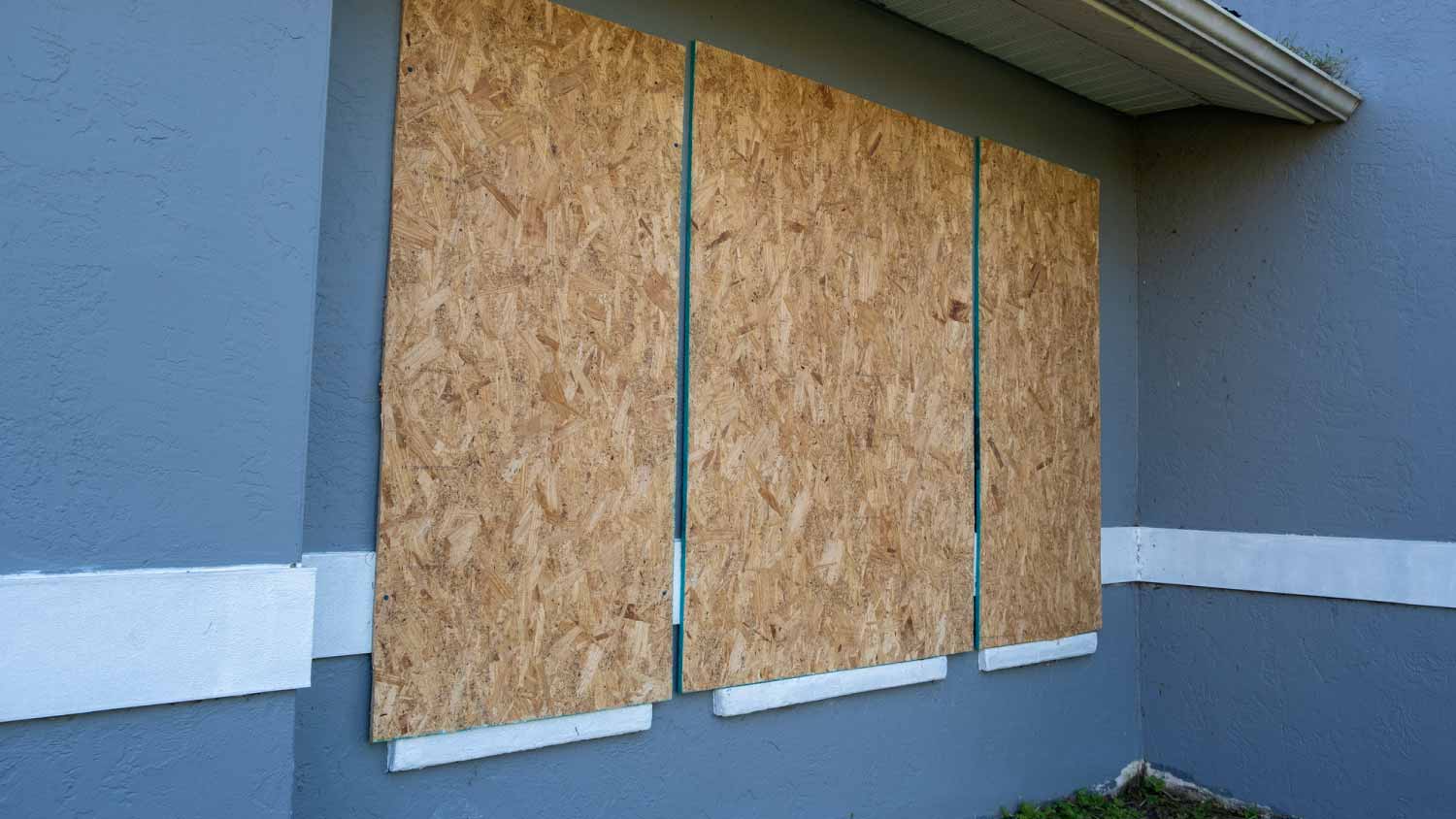
You’re not likely to find precut plywood in a store selling hurricane shutters. However, some people purchase the material from hardware stores and cut pieces to fit over their windows and doors. They can secure them in place as a storm approaches using screws or bolts.
Plywood hurricane shutters are the least expensive type, which is great if you’re budget-conscious, but they also offer the least amount of protection. The upside is that almost anyone can learn how to board up windows for a hurricane, although it’ll require a lot of heavy lifting and time.
| Pros | Cons |
|---|---|
| Most affordable option | Not as effective as other options |
| Easy for most people to install | Labor-intensive to install and remove |
| You can get the materials at a hardware store | Storing plywood takes up space |
Best for: Homeowners who want a quick solution on a budget
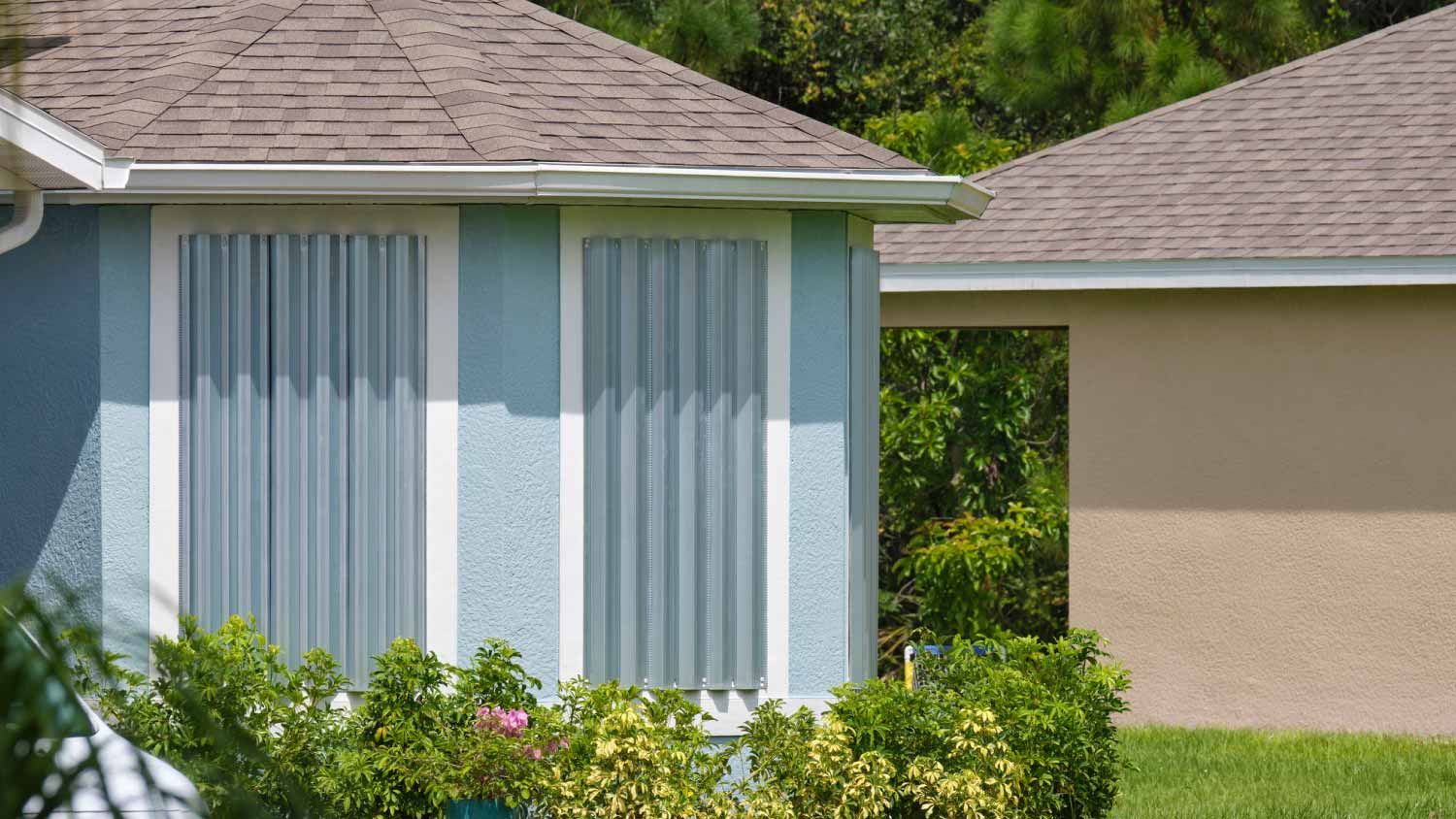
Hurricane or storm panels are the most common type of hurricane shutters. They can be constructed of steel, aluminum, wood, fiberglass, engineered fabric, or heavy-duty plastic. Overall, they’re the least expensive type of shutters capable of high-level protection. Owners store them away until they need them and then secure them over window and door openings with bolts, tracks, clips, or other attachment methods.
| Pros | Cons |
|---|---|
| Least expensive for the amount of protection | Installation may take hours and require two people |
| Removable for easy storage | Metal panels can have sharp edges |
| Various material types to choose from | Requires proper storage |
Best for: Homeowners looking for good protection at a reasonable price
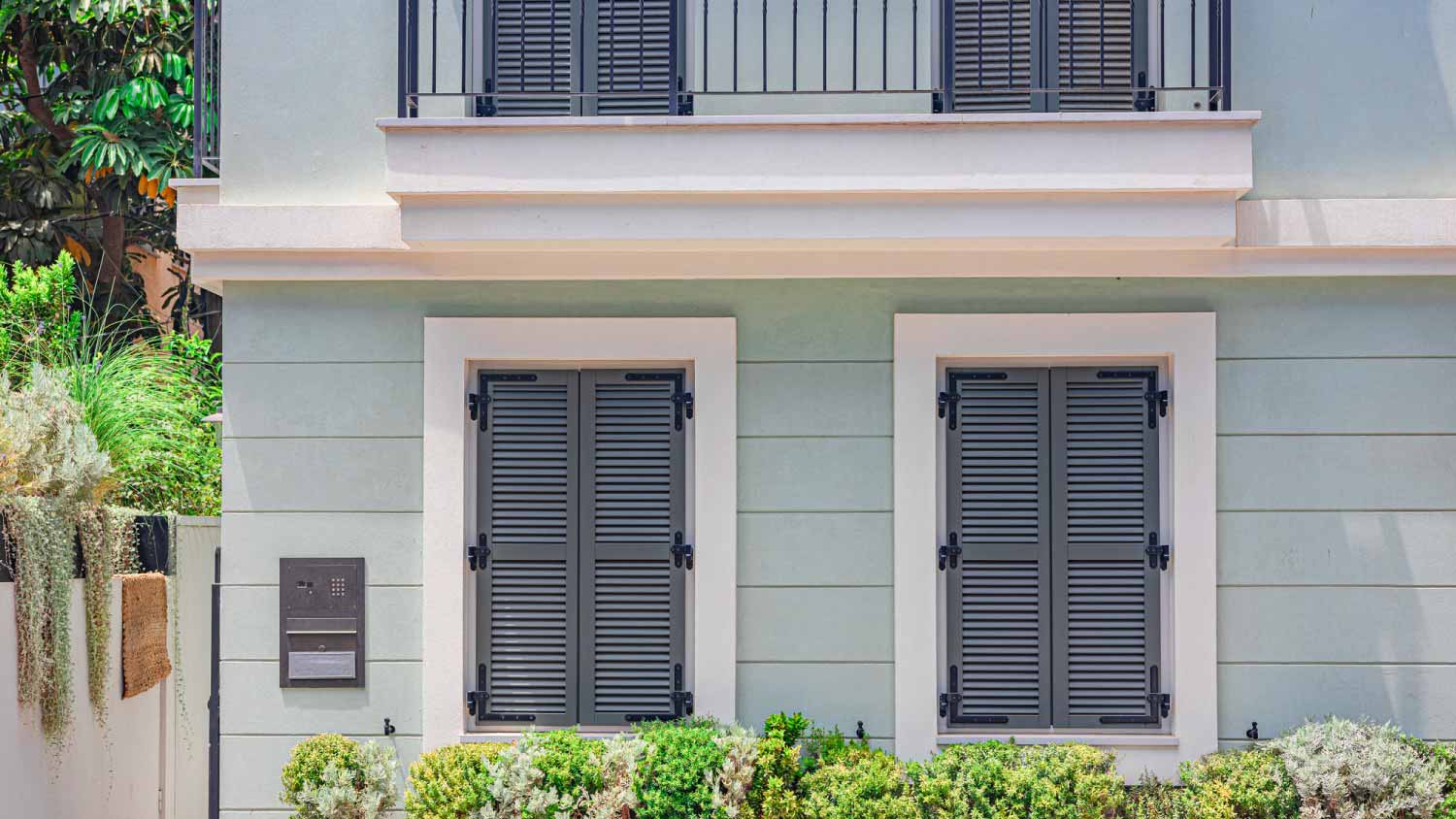
Colonial hurricane shutters appear as traditional decorative window shutters at first glance. However, these protective barriers don’t just sit there and look nice. Before a storm hits, you can swing them closed and latch them in place. These shutters remain on the home’s exterior all year and come in aluminum, wood, PVC, or fiberglass.
| Pros | Cons |
|---|---|
| Nice appearance | Protects windows but not doors |
| Easy to shut before a storm | Higher cost |
| No storage required | May require a storm bar for additional protection |
Best for: Homeowners seeking a visually appealing solution
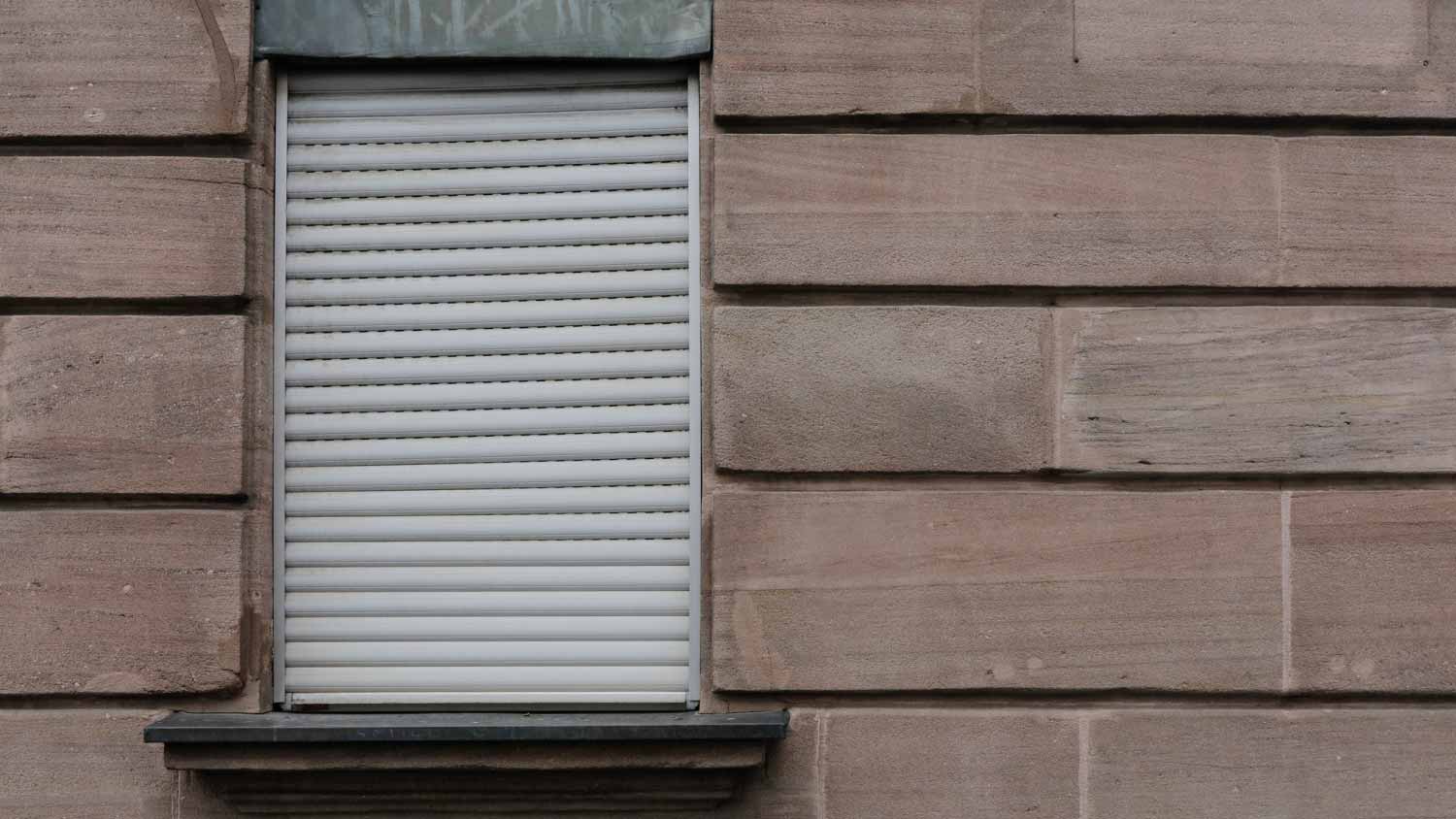
Roll-down shutters are, arguably, the most convenient type of hurricane shutters. They also tend to be more costly than other types. These aluminum or PVC hurricane shutters stay rolled up inside a box that mounts above each window and door. Simply press the button as a storm approaches, and a motor unrolls them into place. If you’re a little late on the button and the power fails, you can also operate them manually.
| Pros | Cons |
|---|---|
| Easy to roll up and down | Higher cost |
| Permanent installation | Storage box might be an unwanted visual |
| Option to use shutters when leaving the house for theft protection | Requires manual operation without electricity |
Best for: Homeowners who want one-touch operation
Accordion-style hurricane shutters are another permanent-mount type of window protection. Like accordion doors, they mount to one or both vertical sides of each opening and fold closed when necessary. Look for accordion-style shutters in almost any shutter material.
| Pros | Cons |
|---|---|
| Available for windows and doors | Permanent mount might not fit home aesthetics |
| Option for shutters to open from any side | Mechanical parts require maintenance |
| Lockable for increased security | Interior of the home gets dark when in use |
Best for: Homeowners who want a cost-effective and permanent protection
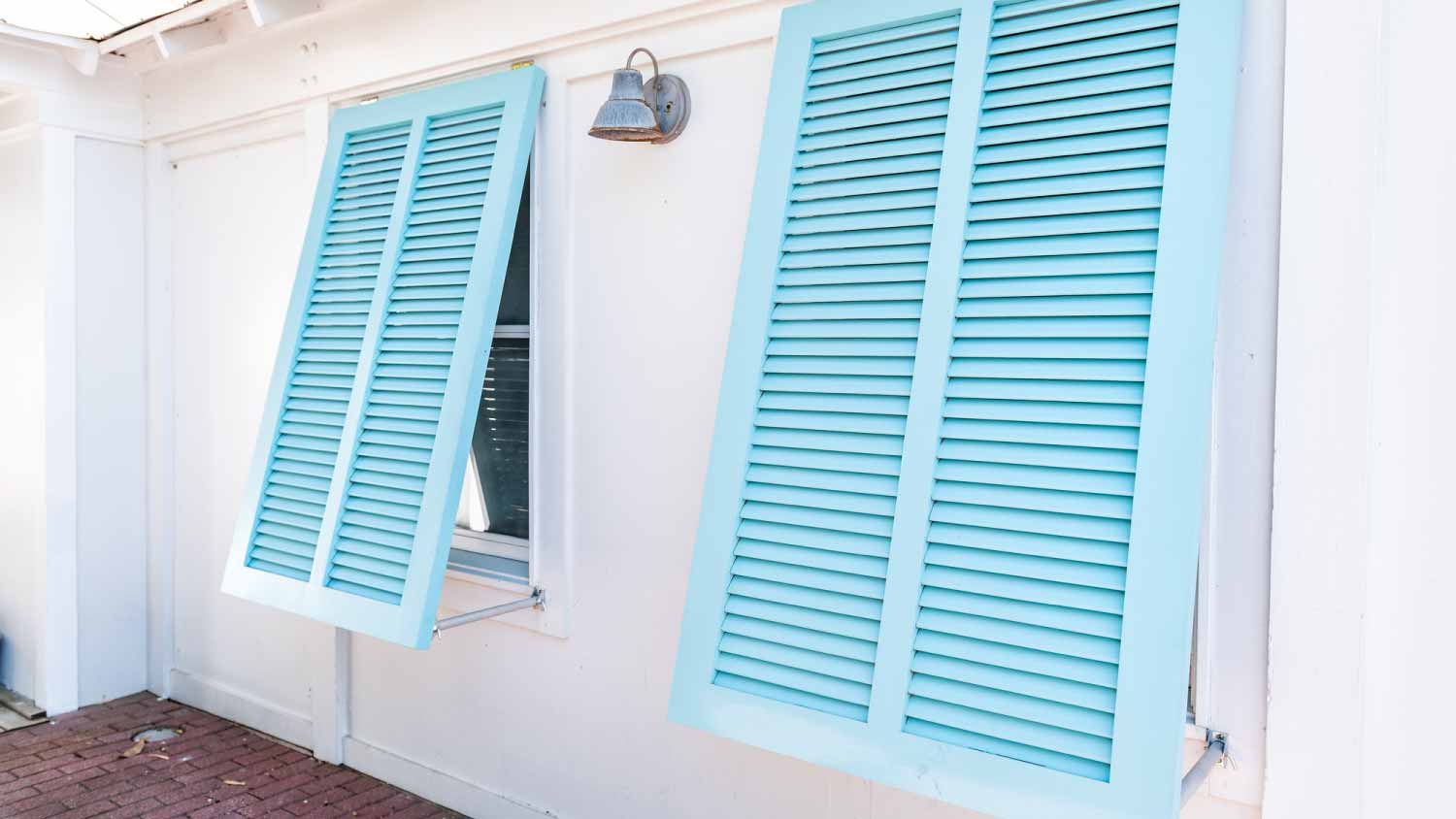
Bahama hurricane shutters can act as window awnings when they’re not performing their more critical task of protecting the home. These shutters are mounted above each window or door and fold down to cover the opening securely. You can find Bahama-style shutters with or without louvers in aluminum, wood, and other materials.
| Pros | Cons |
|---|---|
| Doubles as an awning | Only available for windows |
| Visually pleasing | Not as durable as other permanent options |
| Increases privacy in the home | Don’t allow much light into the home |
Best for: Homeowners who want shutters that offer privacy
Hurricane screens consist of super-strong synthetic fibers that weave together to create a barrier as effective against storms as their more rigid counterparts. The screen housing and tracks are permanently mounted above and around windows, doors, and openings. They operate similarly to roll-down shutters and share similar pricing. Hurricane screens are available in large, small, and custom sizes, making them convenient for protecting large windows, openings, or storefronts.
| Pros | Cons |
|---|---|
| Take up less space | Requires track maintenance |
| Lightweight and easy to operate | Noisier |
| Offers more security | More expensive |
Best for: Homeowners looking for easy-to-use hurricane shutters
Hurricane shutters are available in several different materials with varying benefits and drawbacks.
The family of wood materials for use in hurricane shutter construction varies from simple plywood cut to fit each window or door to custom-built decorative styles that offer relatively simple installation, are cost-effective, and are DIY-friendly. Wood hurricane shutters provide mid-level to solid protection, depending on their construction.
Metal, including aluminum and steel shutters, can be temporary, permanent, or semi-permanent with track or bolt-on installations. Steel can be heavy, and you may need help putting them up, but they’re relatively easy to install and offer more robust protection than wooden shutters.
The plastic hurricane shutter options include PVC, transparent polycarbonates, and thermoplastics. Depending on the material and size, they can be heavy or lightweight. Polycarbonateise the only completely see-through material for use in hurricane shutters. Plastic shutters offer a range of protection levels from adequate to as strong as steel, depending on their construction and material type.
Fabric hurricane shutters are different from all of the other rigid types. They’re more like a flexible protective covering. Despite the name, they’re extremely strong and meet the building code requirements in many southern U.S. counties.
Do you need help determining which type of hurricane shutters are best for you? Here are some of the most important factors to consider.
For the best storm protection, look for hurricane shutters made of strong materials, like aluminum and steel. Wooden shutters and hurricane screens are less durable, but they’re still good options for keeping the elements out of your house. Plywood shutters, the least expensive option, are a temporary solution and won’t last as long as the other types of shutters.
The cost of hurricane shutters is highly variable. The number of windows needing protection and size will directly affect the material costs. Installation pricing will depend on the size and complexity of the job, the type of shutters, and the number of stories in the home.
Expect an average cost of around $3,700, ranging from $1,550 to $6,000. However, large custom installations can cost upward of $11,000.
The easiest hurricane shutters to DIY are panels and colonial styles. Although skilled DIYers can install any type of hurricane shutter, the task can get tricky for permanent styles such as roll-down and accordion types that require precision and potentially heavy lifting—especially on second and third stories.
If you live in an area where hurricanes are possible, a hurricane shutter installer near you can give you specific details for your location and help you get the protection your home and family need.
You’ll also want to factor in your style preferences when picking out storm shutters. Some types of hurricane shutters—like plywood and hurricane screens—aren’t exactly attractive additions to your home. Consider colonial or Bahama-style hurricane shutters if you’re looking for something with a little more aesthetic appeal.
From average costs to expert advice, get all the answers you need to get your job done.

Get expert insights on shutter repair cost, including average prices, key cost factors, and tips to save money on your next shutter repair project.

Hurricane shutter costs vary widely depending on many factors. Explore our breakdown of the elements that impact what you’ll pay for hurricane protection.

Do you live in a hurricane evacuation zone? Learn what damage a hurricane can cause, how to prevent it, and what to do after a cyclone or tropical storm.

Hurricanes and tropical storms can wreak havoc on your home, but there are some ways to prepare. Find out how to protect your windows during the hurricane season.

Learn how to board up windows for hurricane protection to keep your home safe from storm damage. Follow our guide to see how it's done.

What is hurricane window film, and is it actually a viable option for home hurricane protection? Find out the facts and pros and cons of hurricane film here.